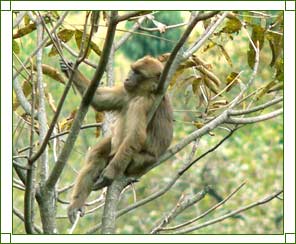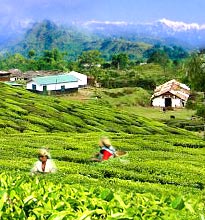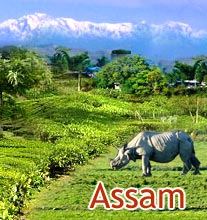 Location: 19 km from Jorhat
Location: 19 km from JorhatArea: 20.98 sq km
Declared As Sanctuary: 30th July 1997
Since its establishment in the year 1997, Gibbon Wildlife Sanctuary has been playing a major role in the research and conservation of the primate community of the animal kingdom. The sanctuary is situated at an approximate distance of 19 km from the city of Jorhat and covers a total area of about 20.98 sq km. Initially, during the British reign, the sanctuary was known as the Hollongapar Forest. However, on 30th July 1997, the Government of Assam declared it as wildlife sanctuary. Since then, it came to be known as the Gibbon Wildlife Sanctuary.
Currently, Gibbon Wildlife Sanctuary has seven species of primates and this includes the Western hoolock gibbon, Capped langur, Bengal slow loris, Stump tailed macaque, Northern pig tailed macaque, Rhesus macaque and last, but not the least, the Assamese macaque. There is a special importance given to the preservation of the Hoolock gibbon and a special program was launched for the purpose, under the title “Conservation of Hoolock Gibbon through Education, Awareness and Socio- economic development of the fringe area community in Gibbon Wildlife Sanctuary, Assam, India”.
Some of the major awareness activities under the Hoolock gibbon conservation program include Anti Poaching Training Camps and Orientation camp for forest staff, three veterinary and health Camps for villagers and cattle, two nature camps for college students and the celebration of the Gibbon Conservation Day. The main flora of Gibbon Wildlife Sanctuary includes Ou Tenga (Dillenia indicia), Amari (Aglaia spectabilis), Bon Aam (Mangifera sylvatica), Amora (Spondias pinnata), Kath Badam (Mansonia dipikae) etc. Due to the rich biodiversity existing in the area, it has receives tourist attention from all over the world.
Among the avian species residing in Gibbon Wildlife Sanctuary, the ones worth mentioning are the Red Junglefowl, Kalij Pheasant, Common Teal, Common Pochard, Great Hornbill, Red Breasted Parakeet, Drongo Cuckoo and the Spotted Dove. Recently, the rare and endangered White Winged Wood Duck was spotted in the sanctuary, by a researcher from the National Institute of Advanced Studies, Bangalore. Since the sanctuary witnesses heavy tourist rush, a number of bungalows have been constructed by the forest department for lodging purposes.











